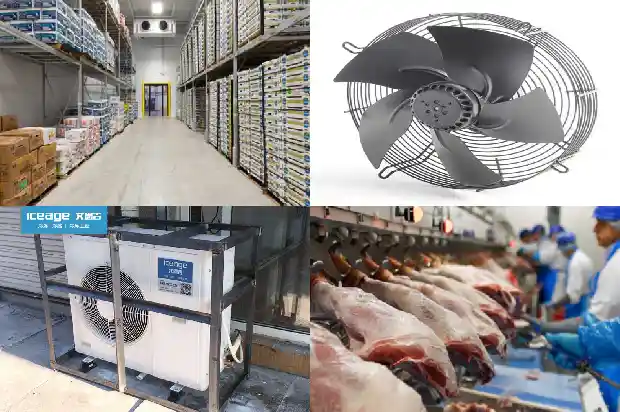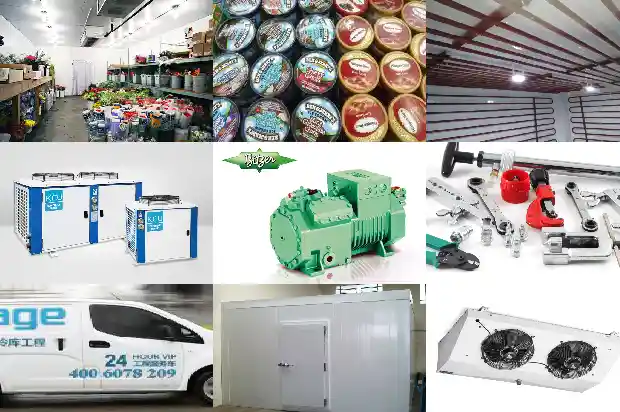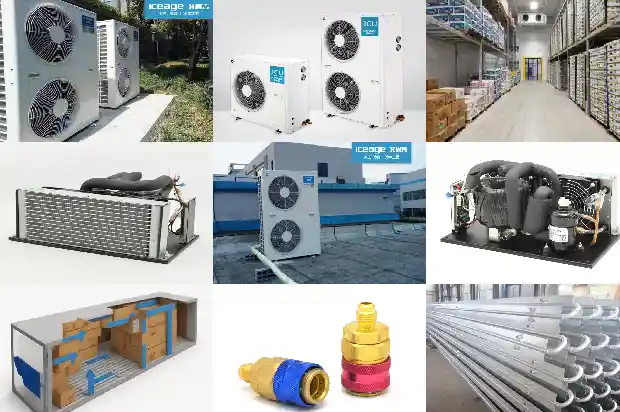Conditions are Required for the Construction of Small - sized Cold Storages
2024-12-19
The main points for constructing a small cold storage are as follows:
- Basic Specifications
The civil brick-concrete structure (abandoned factory buildings can also be utilized) requires a plane area of 30 - 40 square meters (it is preferable that the length-width ratio is 4:3 or 3:2), with a height of more than 3 meters. Install one insulated cold storage door with the size of (1.8 - 2.0) meters × (0.8 - 1.0) meters and one ventilated and insulated window with the size of 0.5 meters × 0.5 meters. - Moisture-proof and Heat-insulation Measures
Use brick, stone or concrete structures, and add moisture-proof layers and heat-insulation layers. The walls and the floor can be reinforced with concrete, and then add moisture-proof layers and heat-insulation layers. The hot side of the ceiling should also be equipped with a moisture-proof layer, which is connected to the moisture-proof layer on the floor, so that the entire warehouse will not be affected by the humid air from the outside. The heat-insulation layer is laid on the inner side of the moisture-proof layer. On the inner side of the heat-insulation layer, apply a layer of cement surface and other protective materials, such as aluminum plates or plastic-coated steel plates. The moisture-proof layer must be laid on the side where the walls, the floor or the ceiling contacts with relatively high temperature. Materials like resin or plastic can be used to prevent the hot air outside the warehouse from entering the heat-insulation layer, condensing into water when encountering cold, and gathering in the heat-insulation layer, which will reduce or even make it lose the heat-insulation ability.

- Insulation Materials for Cold Storage
There are two types of insulation materials. One type belongs to the moisture-permeable insulation materials, such as glass wool, rice husks and asbestos. When using this kind of insulation materials, there must be a moisture-proof layer outside. Otherwise, moisture will easily penetrate through the insulation layer and enter the warehouse, failing to play the role of heat insulation. The other type is to make the insulation layer with airtight materials.
The selection of insulation materials should be comprehensively considered according to factors such as construction, the age of the building and power consumption during long-term use.
- Prefabricated Warehouse Body
Use prefabricated warehouse body components including moisture-proof layers and heat-insulation layers, and assemble them on the leveled ground on site. The advantage is that the construction is convenient and it is easy to relocate. The disadvantage is that the cost is relatively high. - Heat Insulation between Walls
The heat-insulation structure of the walls is related to the temperatures of the two adjacent rooms. For example, when the temperature difference between the two adjacent rooms is less than 4 °C, the insulation materials may not be laid. When the temperature difference is relatively large, the insulation materials must be laid. At this time, the insulation materials should be laid on the side of the room with a lower temperature to prevent the insulation materials from getting damp. When the thickness of the brick wall is only half a brick, on the side with a higher temperature, apply a moisture-proof cement mortar plastering layer. In addition, the refrigeration unit should also be set up according to the product instructions.
Related Articles
- What are the Storage Conditions of Nectarine in Controlled Atmosphere Cold Storage?
- What Are the Three Essential Conditions for the Safe Operation of the Refrigeration System?
- Is the heating effect of air source heat pump air conditioner with enhanced vapor injection really good under low temperature conditions?
- Conditions for Storage of Persimmons in Controlled Atmosphere Cold Storage
- Where Lie the Key Construction Technologies of the Ammonia Refrigeration System?
- What Issues Should Be Noted in Cold Storage Installation and Construction?
- What Benefits Does Cold Storage Construction Bring to People in Life?
- Introduction to the Construction and Features of Cold Storage in Cold Chain Logistics
- Myths about "condensate water" in HVAC construction. Know more
- How to prevent vibration and reduce noise in the installation and construction of cold storages?
- Common Issues to Pay Attention to During Cold Room Installation and Construction
- Characteristics of Mini Cold Storages in Cold Storage Projects
- Differences Between Steel Structure Cold Storages and Multi-story Civil Engineering Cold Storages
- Steps for Building Logistics Cold Storages
- Some Simple Troubleshooting for Combined Cold Storages
- Temperature Requirements for Various Cold Storages
- Daily Maintenance Training for Users after Installation of Small and Medium-Sized Cold Storages
- Types and Temperature Requirements of Seed Cold Storages
